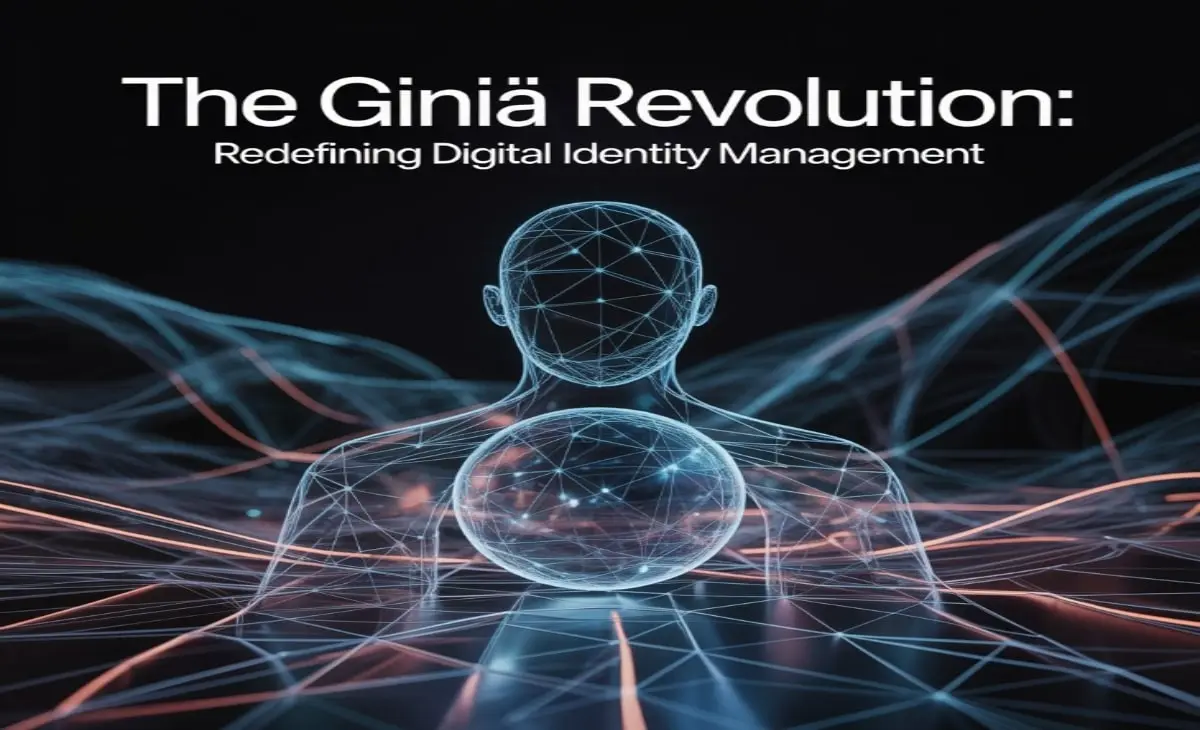giniä represents a groundbreaking shift in digital identity management, built on principles of user ownership and security. It is designed as a self‑sovereign identity (SSI) platform that places control firmly in the hands of the individual. Unlike traditional systems that rely heavily on centralized servers, It uses decentralized infrastructure—often blockchain‑based—to store and verify credentials. This architecture removes single points of failure and reduces reliance on third‑party data holders.
In practice, when you sign up with giniä, you verify your identity using trusted documents or biometric checks. Those credentials are encrypted and stored across distributed nodes. Instead of sharing sensitive data with every service provider, you only provide zero‑knowledge proofs or selective disclosures. It ensures both privacy and verifiability, without exposing unnecessary personal information.
Why Guinea Matters in the Digital Era
As digital transformation accelerates across industries, the demand for secure, user-centric identity solutions increases. Giniä matters because it addresses critical challenges: data privacy, trust, regulatory compliance, and user convenience.
Organizations struggle with compliance burdens such as GDPR and local data protection laws. Storing all identity credentials centrally creates risks. A breach can expose millions of identities. It mitigates this by encrypting and distributing data, reducing risk and compliance complexity.
Users benefit too. When signing up for services—whether banking, healthcare, education, or government portals—they avoid the repetitive process of sharing personal documents. They also avoid exposing more information than necessary. The decentralization and selective sharing features make It a simple, secure, and future‑ready solution.
Ultimately, giniä isn’t just a tool; it’s a foundational shift toward data sovereignty and digital trust in the modern age.
Explore more insights on our homepage for the latest updates.
Key Features of Giniä That Make It Stand Out
Decentralization for Greater Security
It’s decentralized design ensures that identity data is never stored in one location. Instead, encrypted data resides on a distributed ledger or network of nodes. This significantly reduces the risk of large-scale breaches. No centralized database means no single point of failure. As a result, attackers cannot simply compromise one server to access user data.
Seamless Interoperability Across Platforms
Supported by open standards and common protocols, It enables the same identity credentials to be used across different services—banks, universities, healthcare systems, government platforms—without losing integrity or consistency. This interoperability removes friction for users, who adopt one digital identity instead of creating multiple accounts with different systems.
Zero‑Knowledge Proofs for Privacy
An essential innovation in giniä is the use of zero‑knowledge proofs (ZKPs). These allow individuals to prove claims—such as age verification or membership status—without revealing the underlying data itself. For example, someone can show they are over 18 without disclosing their exact birthdate. This approach enables trust without sacrificing privacy.
How giniä Works: A Step‑by‑Step Breakdown
Identity Creation and Verification
Your journey with giniä begins by registering and verifying credentials. You provide essential documents—such as an ID card or passport—through trusted verification channels. Biometric confirmation may be used when needed. Once verification is complete, your identity credentials are encrypted and split across the decentralized network.
Credential storage on a decentralized ledger
After verification, It stores credentials in a distributed manner. This ensures that no single entity holds entire personal records. Data is encrypted and broken into pieces, spread among multiple nodes. Only the user’s private key and explicit consent can unlock or reconstruct the identity details.
Controlled Data Sharing
When you need to interact with a service—say, opening a bank account—you don’t hand over raw data. Instead, giniä enables selective disclosure. You might share proof of identity or financial status without revealing extraneous details like full address or transaction history. The verifier checks authenticity using cryptographic proofs.
Immutable Transaction Logging
All identity-related transactions—for instance, credential issuance or verification events—are logged immutably. These records provide a transparent trail that helps both users and service providers audit access, revoke credentials if necessary, and maintain accountability. Users always remain in control and can see who accessed what and when.
Use Cases Where giniä Shines
Transforming Healthcare Data Access
In healthcare, patient identity verification and record sharing are often laborious. With It, patients can manage their records securely, grant access to their doctors or institutions as needed, and revoke access at any time.
Revolutionizing Banking and KYC
Opening a new account often requires extensive onboarding and document checks. With giniä, KYC (Know Your Customer) becomes quick, secure, and reusable across multiple providers. Users verify once, and those verified credentials can be shared with other financial institutions—reducing redundancies and cutting fraud risk.
Simplifying Education Credential Verification
Academic credentials are often subject to forgery or delays during verification. With It, universities can issue digital diplomas that students store securely. Employers and institutions verify credentials instantly, without back‑and‑forth or document duplication. This enhances mobility and trust.
Enhancing Government Digital Services
Government services—voting, tax filing, licensing—can greatly benefit from giniä. Citizens use their digital identity to access services seamlessly, without carrying physical ID documents. Governments enjoy streamlined verification processes, reduced fraud, and improved citizen trust.
Benefits of Adopting Giniä for Personal and Business Use
Privacy Control and Data Sovereignty
Users of It retain control over their personal data. They choose what information to share, with whom, and for how long. This level of data sovereignty builds trust and reduces concerns about misuse.
Portability and Cross‑Platform Compatibility
Once created, a giniä identity works everywhere—across apps, institutions, and countries. Users avoid creating duplicate profiles or undergoing repeated verification. This portability offers convenience and continuity in digital identity management.
Compliance with Global Data Regulations
By design, It aligns with privacy regulations like GDPR and CCPA. It enables conditional sharing, user consent, and audit trails. Organizations adopting it can demonstrate accountability and user-centric compliance with global standards.
Streamlined Operations and Higher efficiency.
Businesses benefit from faster onboarding, reduced paperwork, and lower verification costs. Customers complete processes more quickly and with less friction. The efficiency gains often translate into better conversion rates and stronger customer satisfaction.
Challenges and Considerations of Giniä Implementation
The need for User Education
Self‑sovereign identity is a departure from familiar practices. Users must learn how to manage private keys, control credential sharing, and understand their responsibilities. Training and intuitive interfaces are essential for adoption.
Integration with Legacy Systems
Older systems may rely on centralized identity models and require significant technical reengineering to support decentralized frameworks. Businesses may face costs in migrating existing infrastructure toward Gini-compatible standards.
Scalability and Infrastructure Demands
Decentralized systems must support a high number of nodes, transactions, and encryption requirements at scale. As usage grows, Giniä implementations must ensure performance, reliability, and efficient consensus mechanisms to remain practical for large organizations.
Real‑World Examples of Giniä in Action
European Bank Case Study
A leading European bank implemented It as a pilot identity platform for onboarding customers across markets. They saw a 70% reduction in verification paperwork and a 40% increase in verified onboarding within weeks. Customers appreciated the streamlined, privacy‑preserving process.
Academic Institutions Using Gini
Several universities have begun issuing digital diplomas through giniä. Graduates store their credentials securely and use them to apply for jobs or further study. Credential verifiers enjoy reduced fraud, while students benefit from instant verification across institutions.
Healthcare Systems Integrating Gini
Healthcare networks in Asia have adopted giniä to unify patient records across clinics and hospitals. Patients consent to share records with visiting doctors, and all access is logged. Care coordination improves, and patient control over records strengthens trust.
How to Get Started with giniä
Creating Your Digital Identity
Begin by visiting the official It portal or downloading their supported app. Sign up with a valid verification document and complete biometric or identity checks. You receive a private key to manage your identity.
Integrating with Partnered Services
Many service providers—banks, universities, clinics, and government services—are partnering with It. You can link your identity to these platforms via secure integrations or smart contract permissions. Once connected, identity verification becomes instant and seamless.
Developer Tools and APIs
Developers and organizations can integrate giniä via APIs and SDKs. These tools allow embedding identity workflows within existing digital platforms. Developers can configure credential issuance, verifiers, and data sharing consent models directly in their applications.
The Role of Gini in Digital Transformation
Digital transformation involves more than cloud migration; it’s a shift in how systems interact and how trust is established online. giniä plays a central role, replacing centralized identity repositories with user-centric, interoperable, and trustworthy identity frameworks. It aligns with digital identity in Web3 ideals of decentralization and data ownership, fueling a new era of responsible digital interaction.
Security Aspects of giniä You Can Rely On
Cryptographic Hashing and MFA
It uses strong cryptographic hashing to protect data fragments. Multi‑factor authentication, including biometrics and device bindings, ensures only the rightful user can access identity credentials.
End‑to‑End Encryption
Data is encrypted at all stages—at rest, in transit, and during processing. Only authorized parties with valid permissions can access decrypted information.
Biometric and Zero‑Trust Architecture
By design, It endorses zero‑trust—no entity is trusted implicitly. Biometric checks combined with private key control further secure identity access and reduce account compromise risks.
The Future Outlook for Guinea
As digital ecosystems evolve, identity will remain central to trust, privacy, and user experience. Giniä’s adoption is growing across finance, education, healthcare, and government. Advances in mobile integration, user interfaces, and privacy compliance will strengthen its reach.
giniä: Redefining Trust in Digital Identity
It symbolizes a future where users no longer rely on centralized authorities to prove who they are. It elevates privacy, autonomy, and innovation in identity systems. Adopting giniä today means embracing a secure, transparent, and user‑defined digital world.
Frequently Asked Questions
What is Giniä?
It is a decentralized digital identity management platform enabling individuals to create, control, and share identity credentials securely.
Is Giniä secure?
Yes. It uses encryption, decentralized storage, and zero-knowledge proofs to ensure that data is kept secure.
How does giniä differ from traditional identity systems?
Traditional solutions store data centrally. giniä distributes encrypted credentials and allows selective data sharing controlled by the user.
Can businesses integrate giniä into their systems?
Absolutely. APIs and SDKs allow organizations to embed giniä identity workflows into their platforms for onboarding, verification, and user management.
Is giniä compliant with data protection laws?
Yes. It is built to support regulations such as GDPR and CCPA by enabling consent, audit trails, and minimal data sharing.
What are the primary benefits of using Gini?
The core advantages include enhanced privacy control, portability, regulatory compliance, operational efficiency, and user trust.
Conclusion
It represents a meaningful leap in how digital identity is managed and trusted. It combines security, user control, interoperability, and compliance in an elegant, future‑ready package. Whether you are an individual, an enterprise, or a government institution, giniä offers a path to more secure, efficient, and user‑friendly identity solutions.
Embrace giniä now to future-proof your digital presence and build trust in every interaction. Secure your digital identity with It today and lead the change toward a decentralized identity future.





